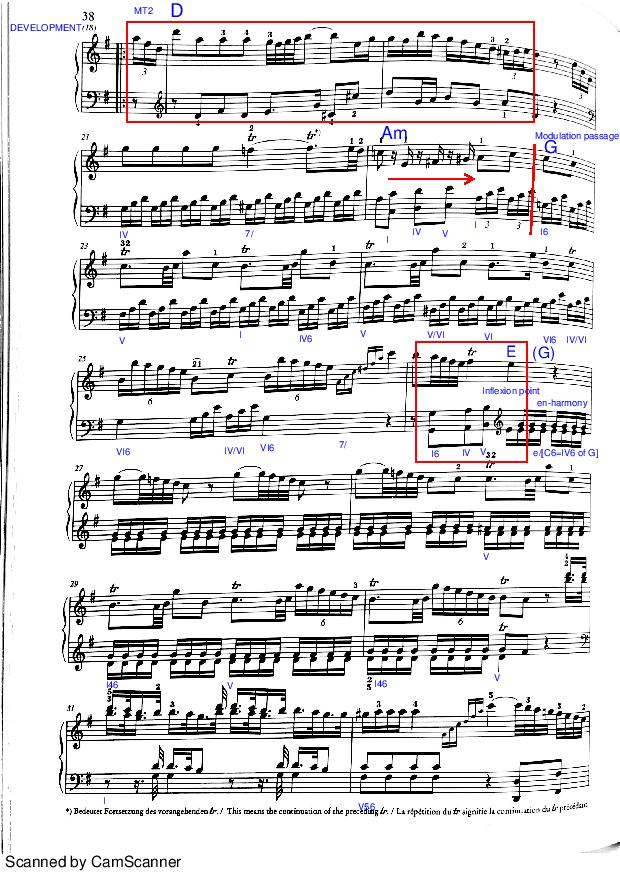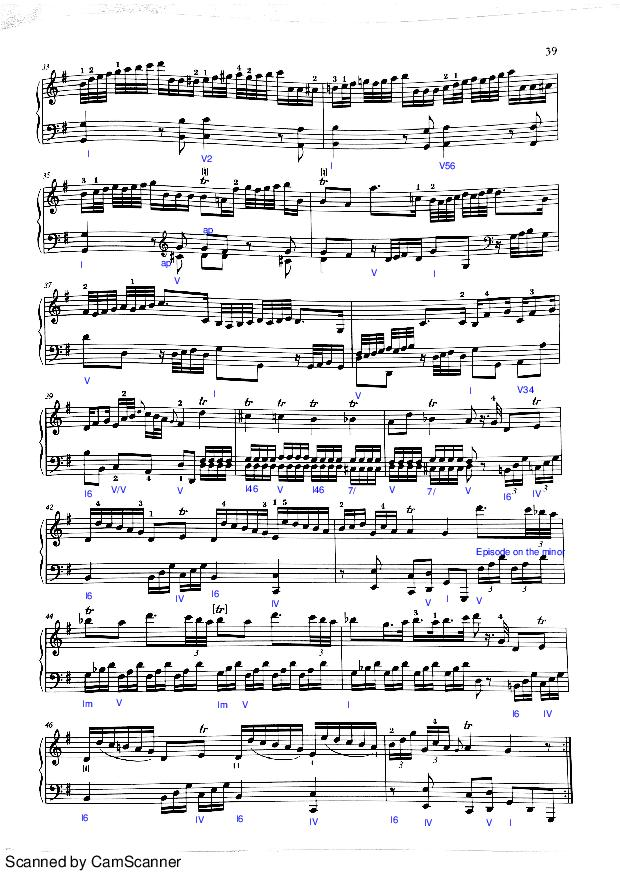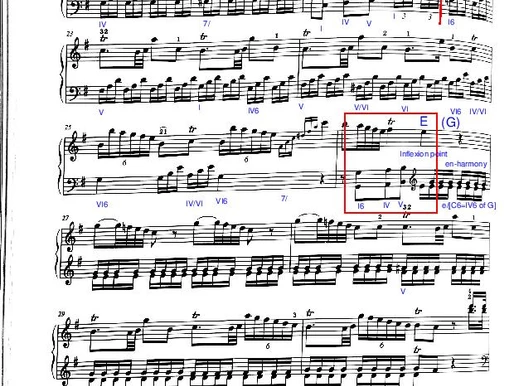Haydn Sonatas, Uncategorized
Haydn Sonata XVI6 – 1st movement (development and re-exposition)
DEVELOPMENT AND RE-EXPOSITON
We start with a transposed version of MT complemented with CT. This iteration of CT together with the fact that one of its main rhythmic features defines many episodic passages, contribute to its definition as CT.
With an upbeat on bar 19 and starting frankly on bar 20 the consequent of this transposed version of MT showcases a blend of MT and ST. The triplets on the bass slow down the speech and prevent the necessity of a quick succession of semi phrases as seen in the EXPOSITION.
The cantabile modulatory passage that follows starts in the minor sub-dominant region. The melodic line then drives through a clean bridge of 2nds starting on top A at bar 23 and continuing at an irregular pace until B on bar 25 -D is touched by the quaver cadential trill. We can also find an interesting turn pivoted by the diminished 7th arpeggio. It starts at the end of bar 25 and picks in bar 26. Em notes are used “en-harmonically” on the bass to direct the tonal centre to G by turning Em into C, IV of G. All the process is aided by the motivic repetition in the treble lasting until the cadence to D in bar 30. Horn themed episode in G anticipates a slow but consistent intention of establishing the latter key as the ending tonality. In spite of the fact that the composer is, at this stage, in need of coming back to G, he works out the episodic section both elegantly and symmetrically with the equivalent EXPOSITION section. Basically he will gently touch D, V of G, in bar 32 before a very intense and typical harmonic sequence starting on bar 33 and properly ending in bar 36. The passage is an elongated version of the one at bar 7 of the EXPOSITION. The reason behind its length is both expressive and modulatory. At the end of it we are ready to come back to the re-exposition of ST in the tonic. No further variations are practised to this section and ST is exposed in its unperturbed original but transposed form.

CONCLUSION
This early sonata partially blends development and re-exposition. It is remarkable that the MT, which occurs only at the beginning of the development, is exposed in the dominant and does not re-occur for the rest of the movement. We can see how the academic sonata form is not fully expressed in this particular piece. On the other hand, the effect of ST being re-exposed in the tonic is strong enough to bring closure to the piece while it is well balanced with the MT at the beginning of this blended section. The development section is fully exhibited in the episodic passages of this section.

#HaydnProject #Haydnproject

